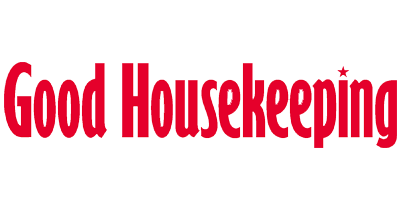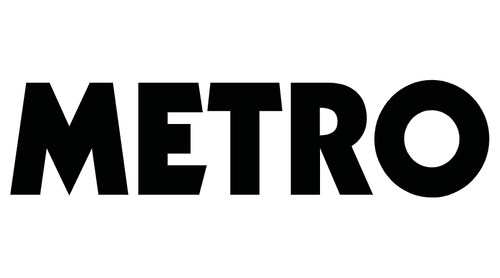

The Evolution of Tarot Reading in Britain: A Journey Through Centuries of Mysticism
Long before tarot cards reached British shores, the islands had rich traditions of divination and fortune-telling. According to Ronald Hutton's seminal work "The Triumph of the Moon: A History of Modern Pagan Witchcraft" (1999), ancient British practices included reading tea leaves, interpreting dreams, and scrying with mirrors or water – practices that would later intertwine with tarot traditions.
The Wise Women of Medieval Britain
Medieval British society harbored complex attitudes toward divination. Court records from the 14th and 15th centuries, preserved in the Public Records Office, reveal that while official doctrine condemned fortune-telling as witchcraft, local "cunning folk" or "wise women" were often respected community members. These practitioners, documented in Keith Thomas's "Religion and the Decline of Magic" (1971), offered services ranging from healing to fortune-telling.
Tarot's Journey to British Shores
Continental Origins
The tarot deck as we know it originated not in Britain but in Northern Italy during the 15th century. According to playing card historian Michael Dummett's "The Game of Tarot" (1980), the cards were initially created for gaming rather than divination. The oldest surviving decks, like the Visconti-Sforza tarot, were commissioned by Italian nobility for card games.
Early British Encounters
The first documented appearances of tarot in Britain came through French influence. Helen Farley's "A Cultural History of Tarot" (2009) notes that while playing cards arrived in England during the 15th century, tarot decks remained relatively unknown until the 18th century, primarily appearing in aristocratic gaming circles.
The Occult Revival and Tarot's Transformation
The Victorian Occult Renaissance
The real popularization of tarot in Britain began during the Victorian era's occult revival. This period saw a perfect storm of factors:
The French Occult Connection
Éliphas Lévi's visits to London in the 1850s proved pivotal. His work "Dogme et Rituel de la Haute Magie" (1854-1856) was the first to explicitly connect tarot with ancient Egyptian mysteries and the Kabbalah, ideas that captivated British occultists.
The Golden Dawn's Influence
The Hermetic Order of the Golden Dawn, founded in London in 1888, proved crucial to modern tarot interpretation. According to Mary K. Greer's "Women of the Golden Dawn" (1995), the order developed complex systems of tarot symbolism that continue to influence readers today. Members included influential figures like:
- Samuel Liddell MacGregor Mathers
- Aleister Crowley
- Arthur Edward Waite
The Rider-Waite-Smith Revolution
A Watershed Moment
The 1909 publication of the Rider-Waite-Smith deck, created by Golden Dawn members A.E. Waite and Pamela Colman Smith, marked a turning point. According to Marcus Katz and Tali Goodwin's "Secrets of the Waite-Smith Tarot" (2015), this deck revolutionized tarot by:
- Including pictorial scenes on all cards, not just the major arcana
- Incorporating accessible psychological symbolism
- Using Christian and Hermetic imagery familiar to British audiences
Early 20th Century Development
World War I and Spiritual Seeking
The trauma of World War I led many Britons to seek spiritual comfort and meaning. Contemporary accounts in the Society for Psychical Research's archives document increased interest in divination during this period, including tarot reading.
The Festival of Britain Effect
The 1951 Festival of Britain included exhibitions on British folklore and mystical traditions, helping legitimize interest in practices like tarot reading. According to historian Becky E. Conekin's "The Autobiography of a Nation" (2003), this celebration of British culture included previously marginalized mystical traditions.
Modern British Tarot Culture
The New Age Movement and Feminist Reclamation
The 1960s and 1970s saw tarot embrace new interpretations. Feminist scholars and practitioners, documented in Marion Green's "A Witch Alone" (1991), reclaimed tarot as a tool for personal growth and feminine spirituality.
Academic Interest
Recent decades have seen growing academic interest in tarot's cultural significance. The University of Exeter's Magic and Esotericism Group has conducted research into historical British magical practices, including tarot reading.
Contemporary Practice and Digital Age
Modern British Tarot Scene
Today's British tarot community is diverse and vibrant. According to the UK Tarot Conference (established 2004), professional readers number in the thousands, while casual practitioners might number in the hundreds of thousands.
Digital Transformation
Social media has revolutionized tarot practice in Britain. Instagram accounts dedicated to tarot readings regularly attract tens of thousands of British followers, while apps offering digital readings have become increasingly popular.
Cultural Integration
Modern British pop culture frequently references tarot, from literature to television. Shows like "Penny Dreadful" and numerous BBC documentaries have explored Britain's occult heritage, including tarot traditions.
The Future of British Tarot
Academic Recognition
Universities increasingly offer courses touching on esoteric practices, including tarot. The University of Exeter, for instance, includes tarot in its Western Esotericism studies.
Cultural Preservation
Organizations like The Museum of Witchcraft and Magic in Cornwall preserve historical artifacts and documents related to British magical practices, including early tarot decks and divination tools.
Conclusion: A Living Tradition
The story of tarot in Britain reveals a fascinating intersection of continental influence, occult revival, and modern reinterpretation. From aristocratic parlor games to widespread spiritual practice, tarot has evolved alongside British society while maintaining its mystical appeal.
What makes the British tarot tradition unique is its blend of influences: continental European esotericism, native British folklore, Victorian occultism, and modern psychological interpretation. This rich heritage continues to evolve in the digital age, suggesting tarot's enduring relevance in British spiritual and cultural life.
0 comments
Blog posts
-

The Evolution of Tarot Reading in Britain: A Journey Through Centuries of Mysticism
Long before tarot cards reached British shores, the islands had rich traditions of divination and fortune-telling. According to Ronald Hutton's seminal work "The Triumph of the Moon: A History of Modern Pagan Witchcraft" (1999), ancient British practices included reading tea...
-

How Moon Worship Shaped Human Culture and Modern Practice
The story of humanity's relationship with the moon begins long before written history. Archaeological evidence, including lunar calendars carved into bone and antler from as far back as 32,000 BCE, suggests our ancestors carefully tracked lunar phases. The Lascaux cave...
-

The Ancient Origins of Angel Numbers, From Pythagoras to Modern Spirituality
Long before the modern spiritual movement embraced angel numbers, ancient civilizations believed in the sacred power of numbers. The story begins in ancient Mesopotamia, where the Babylonians developed complex numerical systems that merged mathematics with divine interpretation. According to mathematical...









